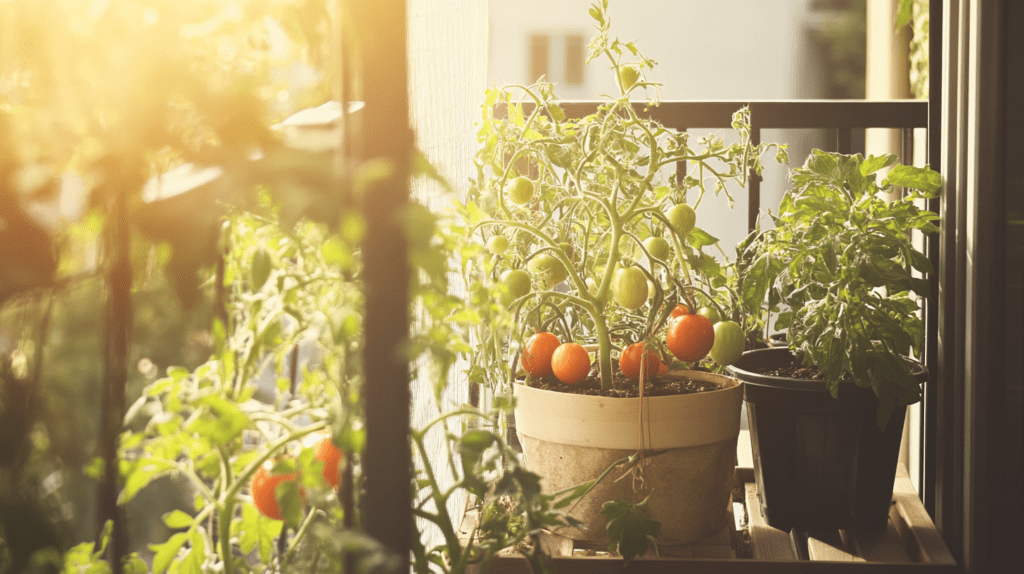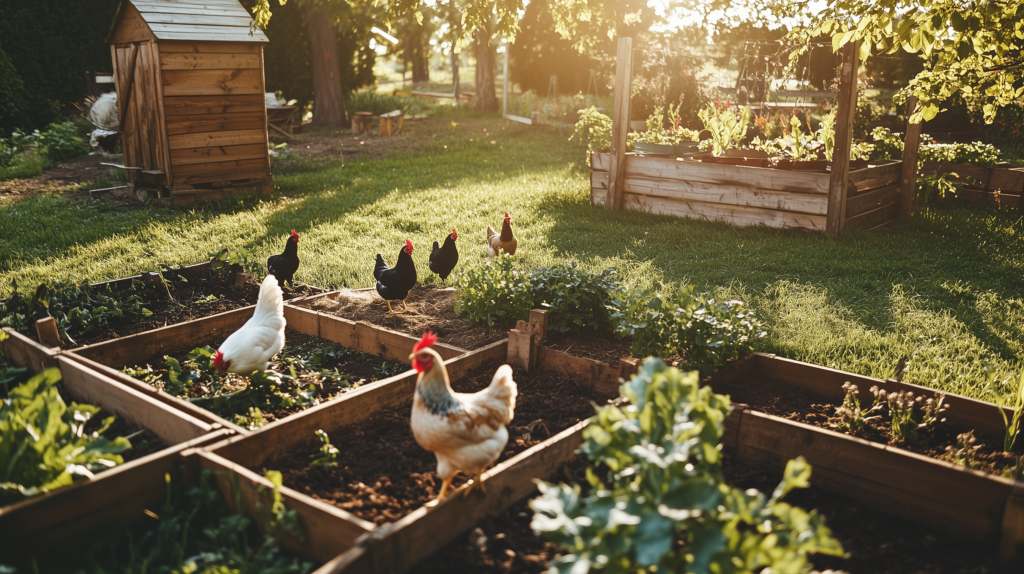This post may contain affiliate links, including those from Amazon Associates. If you make a purchase through these links, I may earn a commission at no additional cost to you. Learn more about our affiliate policy.
Some seasons come in with an invitation as sunlight softens, mornings cool, and trees shift their colors with ease.
Fall has always felt like nature’s reminder to me, a nudge to slow down, reflect, and prepare.
But it can also awaken a deeper desire: the longing for a simple, self-sufficient life, even when the space around us feels impossibly small.
I know the hesitation, the overwhelm, and the self-doubt that says, “I can’t start here, not yet.”
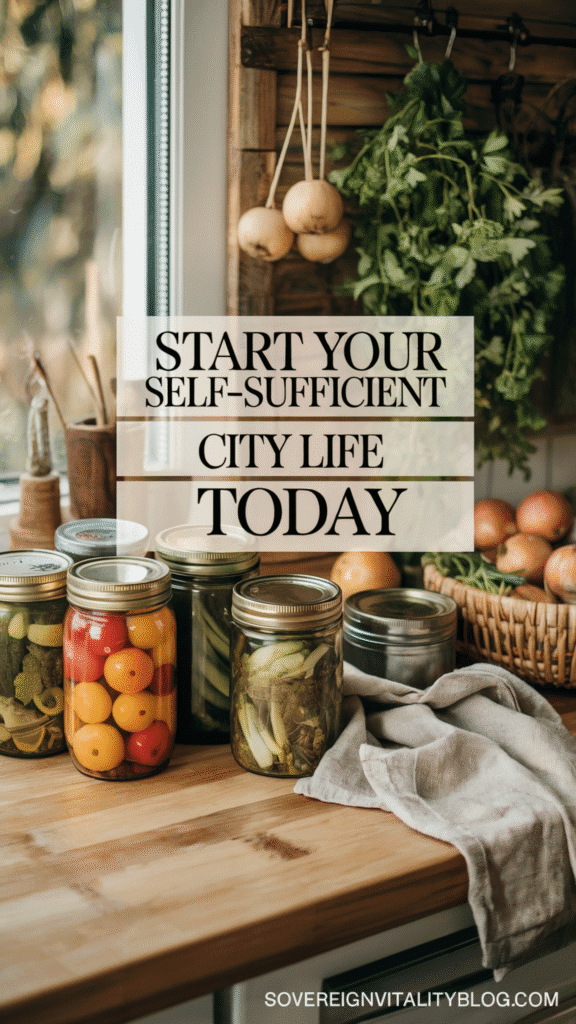
And yet, each autumn, from the small balcony of my apartment, I reaffirm one truth: Self-sufficiency isn’t about how much land or time you have.
It’s about choosing intentional actions that reconnect you with the rhythm of nature and yourself. It’s about doing something small yet meaningful right where you are.
If you’ve been feeling that pull toward urban homesteading, here’s how to start this fall calmly and intentionally right now, in your own small space.
Start with One Fall Growing Project
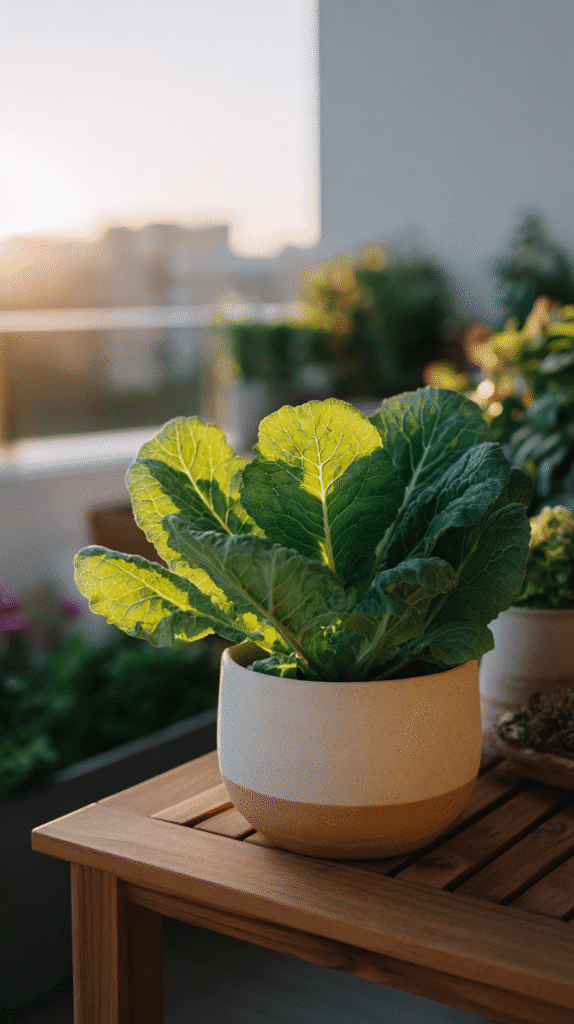
I’ve learned from years of balcony gardening that simplicity is the heart of success.
It’s easy to get excited and plant everything at once. But in reality, the magic happens when you choose one plant, tend to it lovingly, and watch it flourish. Here’s how to begin:
- Choose easy-to-grow fall crops like lettuce, kale, spinach, carrots (container-friendly varieties), or garlic cloves. These plants thrive in cooler weather and containers.
- Find your ideal containers: deep enough pots for root vegetables like carrots and garlic, shallow trays or wide pots for greens like lettuce and spinach.
- Plant mindfully, noticing the feel of the soil in your hands, the smell of earthiness, and the calm of planting something real.
- Water and watch. Tend your plants, checking daily, creating a natural rhythm. Let this routine ground you in a slower pace.
If you’re curious about exactly what to plant, read my guide on 5 Best Fall Vegetables to Plant in Containers Now.
Remember, this isn’t about creating a full-fledged farm. It’s a seasonal commitment to something small yet meaningful.
Learn to Preserve What You Grow (or Buy)
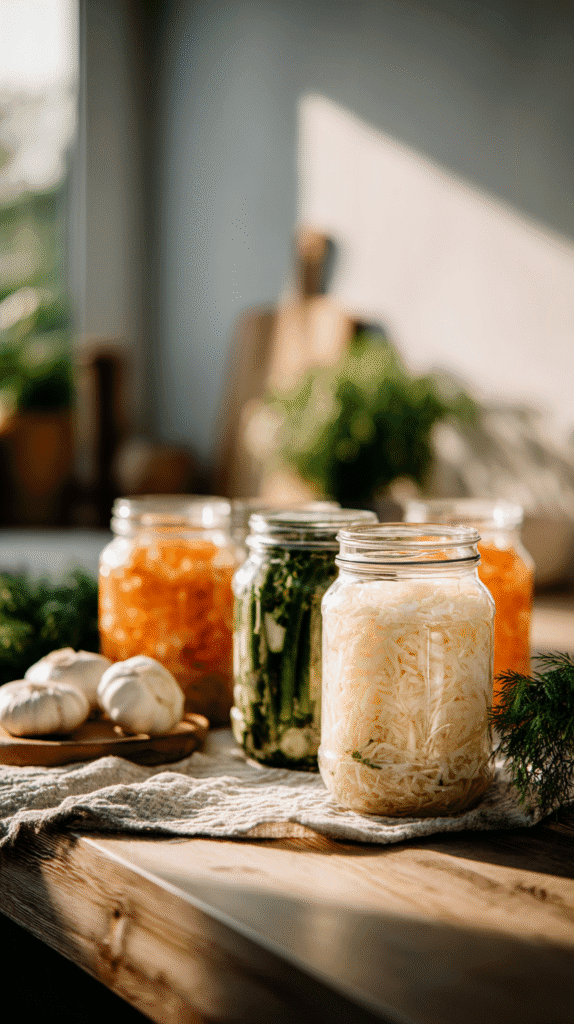
Fall abundance often feels fleeting.
Farmers markets brim with squash, apples, herbs, and root vegetables, yet soon they’ll retreat for winter.
Urban homesteading is about gently capturing that fleeting abundance.
But preservation can feel intimidating, especially with limited kitchen space. Here are three simple methods I rely on in my tiny apartment:
- Freezing: Simplest of all, freezing berries, herbs, spinach, and sliced carrots takes only minutes. Spread produce on parchment-lined trays, freeze, then transfer to containers or reusable bags. Your future winter meals will thank you.
- Fermentation: My favorite for its simplicity and health benefits. I love making small batches of fermented carrots or cabbage right on my kitchen countertop. Use this fermentation kit to get started easily.
- Drying Herbs: Growing and drying herbs like thyme, rosemary, or sage is surprisingly meditative. Tie bundles and hang upside-down near a sunny window, or use your oven on its lowest setting for quicker drying.
You can explore these methods further in my guide: How to Preserve Fall Foods in a Tiny Apartment Kitchen.
Preservation is practical and deeply comforting, a promise that we’ve cared enough to save some of this season’s beauty for colder days.
Add Life to Your Space with Herbs
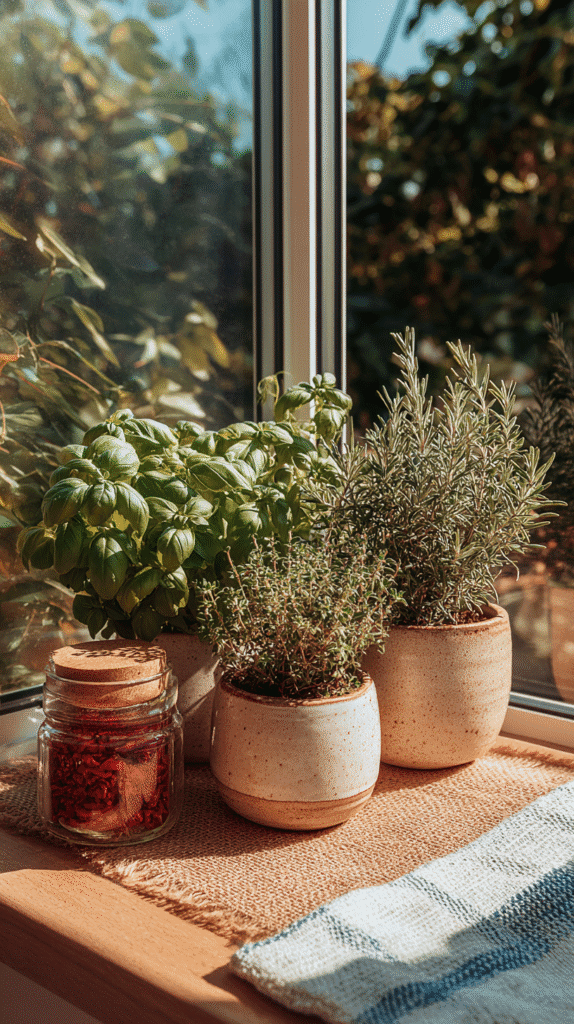
Herbs offer the easiest entry point into apartment homesteading. Even if outdoor space is nonexistent, herbs find ways to thrive. \They offer freshness to meals, gentle scents to your kitchen, and a daily reminder of growth.
Here’s how you can start your indoor herb garden this fall:
- Choose herbs that flourish indoors: rosemary, mint, thyme, basil, and parsley.
- Select your containers: try repurposed jars, ceramic pots, or hanging baskets. Here are some more DIY container ideas apartment gardening on a budget.
- Find your light: Herbs adore sunny windowsills or areas receiving at least 4–6 hours of indirect daylight.
- Create your rhythm: Water consistently but lightly, allowing soil to dry slightly between waterings.
Read more detailed steps in my post: 7 Easy Indoor Herb Garden Ideas for Fall and Winter.
Having fresh herbs close by turns cooking into something joyful, intentional, and sovereign which is exactly how food preparation should feel.
Create a Simple Fall Homestead Pantry
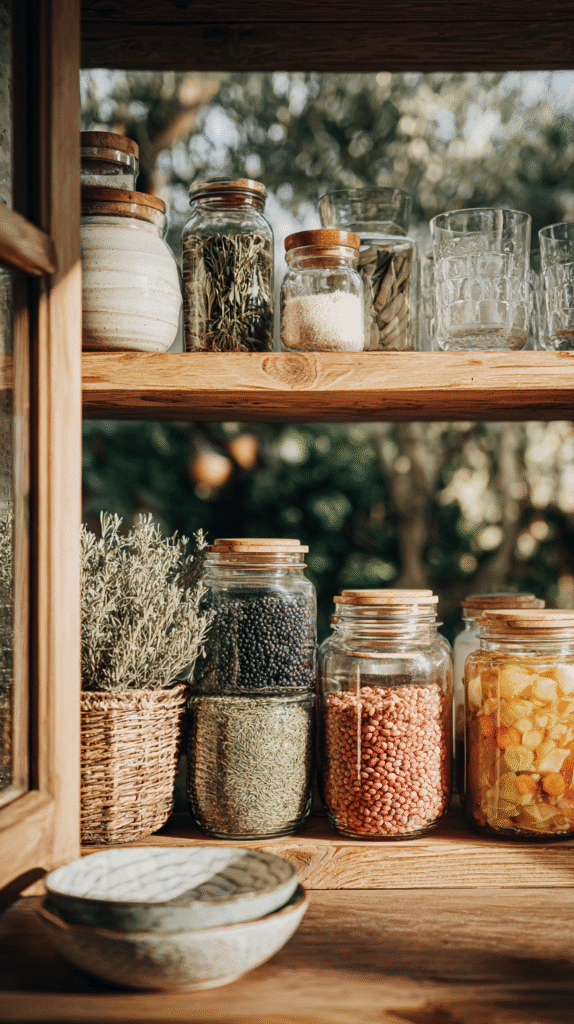
There’s something profoundly satisfying about opening a small pantry stocked intentionally with homemade preserves, dried herbs, and staple foods.
It speaks of reassurance and security for the season.
Here’s how I keep my pantry simple yet effective each fall:
- Stock dry staples: Grains, beans, lentils, and pasta.
- Add preserved items: Homemade fermented vegetables, jams, dried herbs, and dried fruit.
- Choose versatile items: Oils (olive and coconut), honey, vinegar, and salt.
- Consider convenience: Quality canned goods (beans, tomatoes, and broth) help create simple, nourishing meals quickly. Be sure to stock your pantry with cans without BPA lining if possible.
- Include simple herbal remedies: Elderberry syrup, chamomile tea, dried sage and thyme for cold-season comfort.
Your pantry doesn’t need to be elaborate. Think intentional simplicity, selecting items that nourish, comfort, and offer security when cold weather or busy weeks arrive.
Make It a Ritual, Not a To-Do List
Urban homesteading feels empowering because it’s about adopting a natural rhythm, moving gently with the seasons.
I used to think homesteading meant constantly doing more. Over the years, I’ve learned it’s actually about choosing less but engaging fully.
If you’re a beginner feeling overwhelmed, keep these reminders close:
- It’s okay to start small: Choose one or two projects that resonate most deeply with your lifestyle.
- Embrace imperfection: Homesteading isn’t about perfect outcomes; it’s about the joy and wisdom gained from the process itself.
- Create rituals: Tend your herbs at sunrise. Preserve foods slowly on quiet afternoons. Make these practices nurturing rather than burdensome.
- Remember your why: You’re not creating more workl you’re reclaiming sovereignty, peace, and a deeper connection to your daily life.
The most powerful homestead rituals often require little more than intention, awareness, and kindness toward yourself.
Begin Small, Begin Now
The path toward self-sufficiency begins with one intentional step. It doesn’t require land, vast resources, or endless time. Urban homesteading in fall is permission to start exactly where you are.
Maybe this fall, you’ll choose to plant garlic or kale on your balcony. Perhaps you’ll ferment vegetables for the first time or fill your pantry thoughtfully. Or maybe you’ll simply nurture herbs in a sunny corner, reclaiming your small space as one of purposeful sovereignty.
Whatever you choose, remember this: Small beginnings are deeply meaningful. Each step, each plant, each preserved jar, is an affirmation of your capacity to live in greater alignment and abundance.


